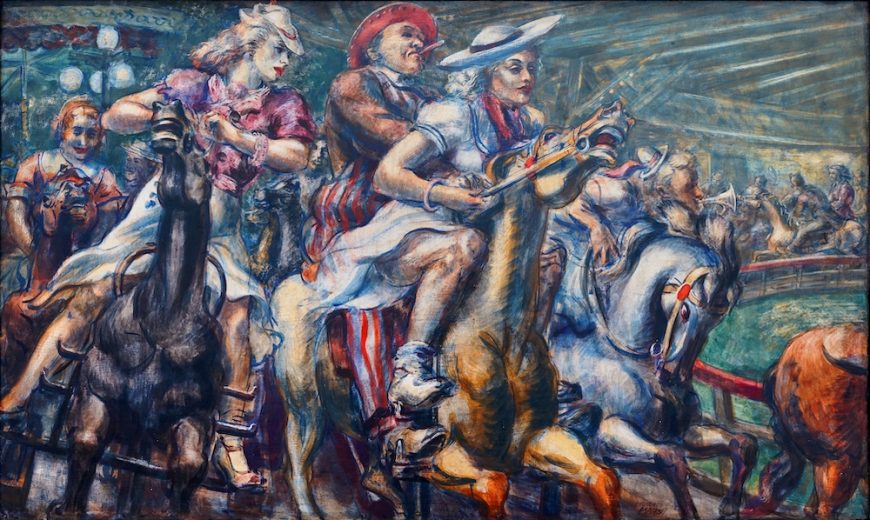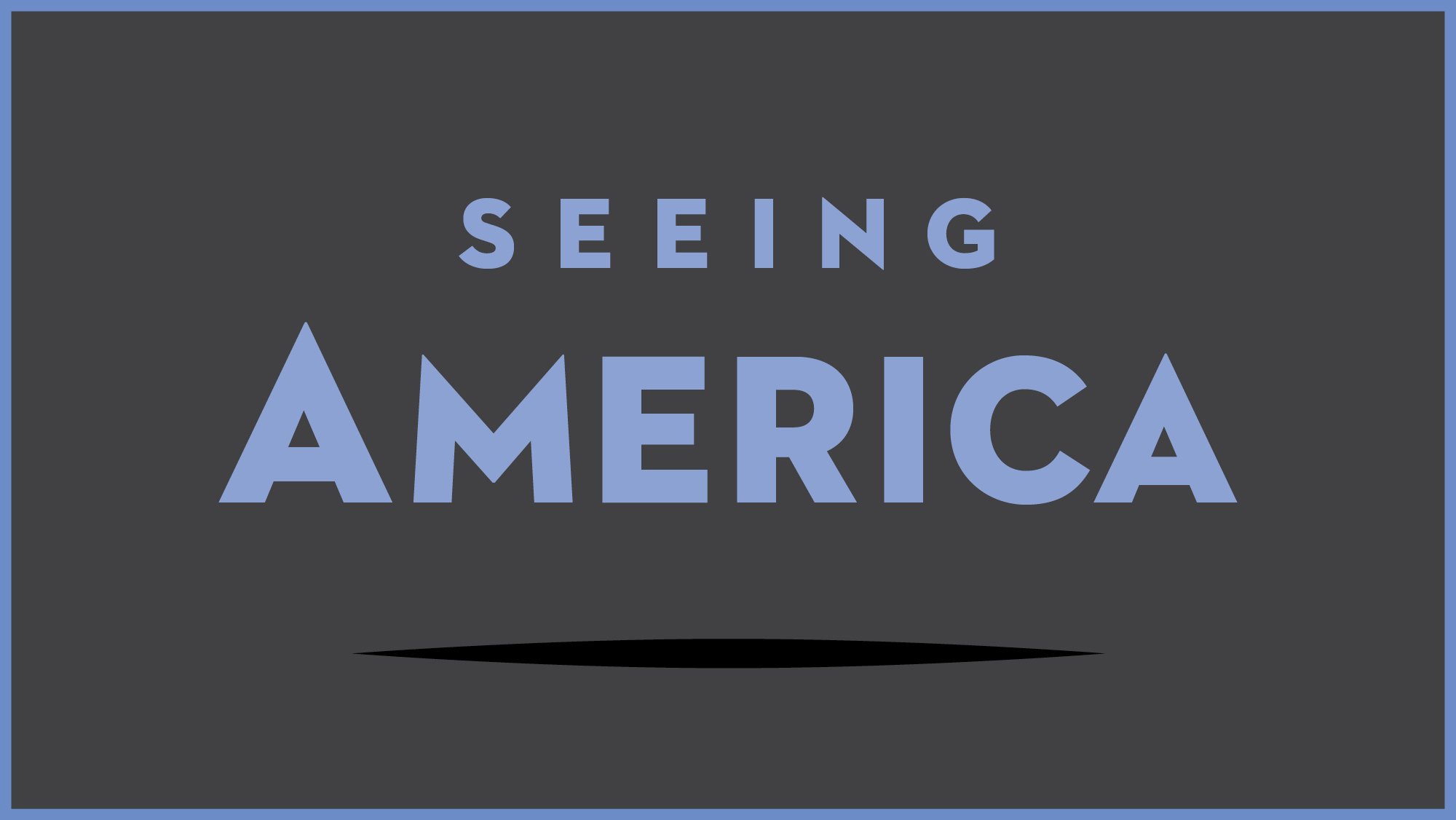Test your knowledge with a quiz
Sloan, Movies
Key points
- John Sloan broke with the established traditions of fine art, taking the city streets of New York as his subject. Along with Robert Henri and other members of the Ashcan School, Sloan captured the grittiness and energy of urban life in the early twentieth century.
- This working class neighborhood is occupied by many different types of people, whom Sloan describes through their clothing and their gestures. His broad brushstrokes create a sense of excitement and instability. At the same time, Sloan preserves certain details (including the provocative title of the movie, Romance of the Harem), but refrains from any moral judgment.
- Sloan was instrumental in the introduction of European modern art in America. He was part of the independent group known as The Eight, which revolted against the conservative National Academy of Design in 1908, and he also helped organize the Armory Show of 1913, which introduced American and European modernism to the general public.
- Sloan’s interest in the lives of working class people was influenced by his Socialist politics. He supported Socialist causes and volunteered as the art editor for the political magazine, The Masses.
Go Deeper
This painting at the Toledo Museum of Art
Read about the Ashcan school of art
Read more about John Sloan and explore his archives and diaries
Learn about the 1913 Armory Show through this online exhibition of primary sources
See original issues of radical periodical The Masses, published from 1911 – 1917
Learn more about popular entertainment in the early 20th century
More to think about

Reginald Marsh, Wooden Horses, 1936, tempera on board, 61 x 101.6 cm (Wadsworth Atheneum Museum of Art
Realist painters captured elements of everyday life, including the leisure activities and entertainment of the working classes. Compare John Sloan’s Movies with Reginald Marsh’s depiction of Coney Island, Wooden Horses. How would you describe the overall atmosphere and mood of each painting? What choices in terms of color, composition, and brushstroke contribute to that feeling? What details did each artist include to communicate ideas about class, society, and popular culture of the period?
Smarthistory images for teaching and learning:
[flickr_tags user_id=”82032880@N00″ tags=”sloanmovies,”]






